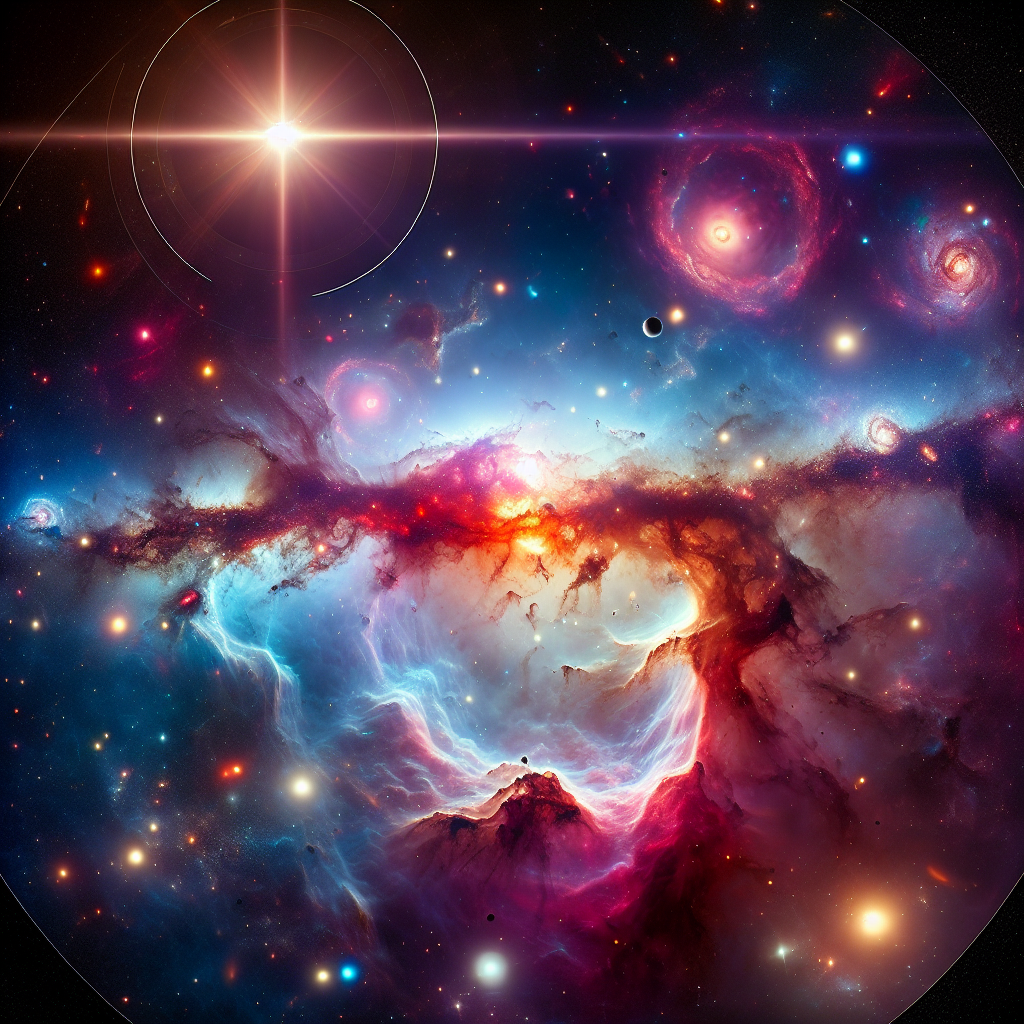
Understanding the Universe’s Expansion: A Cosmic Conundrum
The universe continues to perplex scientists as new data from the James Webb Space Telescope (JWST) deepens the mystery surrounding the universe’s expansion rate, a phenomenon critical to our understanding of cosmology. This cosmic puzzle, known as the “Hubble tension,” arises from conflicting measurements of the universe’s expansion rate, known as the Hubble constant. Recent findings published in The Astrophysical Journal have provided more precise measurements, yet the data only broadens the existing rift.
The Hubble Tension: A Long-Standing Discrepancy
For decades, astronomers have employed two primary methods to determine the universe’s expansion rate:
- Cosmic Microwave Background (CMB): Using satellites like Planck to observe the ancient glow of the Big Bang, this method estimates the Hubble constant at around 67 km/s/Mpc.
- Stellar Brightness Measurements: Observations of Cepheid variable stars, known for their predictable brightness fluctuations, suggest a Hubble constant of approximately 73 km/s/Mpc.
The disparity between these two values has intrigued scientists, and JWST’s recent data further confirms the higher measurements, suggesting a constant of 72.6 km/s/Mpc.
What JWST’s Data Reveals
JWST’s significant contribution lies in its ability to observe thousands of Cepheid stars across distant galaxies, enhancing the precision of previous measurements conducted by the Hubble Space Telescope. The new data reinforces the credibility of stellar brightness-based measurements, leaving the scientific community to ponder over potential cosmic anomalies rather than mere systematic errors.
Astronomical Insights and Theoretical Implications
Notable physicists and astronomers, including Adam Riess, a Nobel laureate from Johns Hopkins University, acknowledge that the meticulous data challenges existing theoretical frameworks. Riess emphasizes that the discrepancy could hint at features in the universe beyond telescope flaws. This sentiment is echoed by fellow cosmologist, Marc Kamionkowski, who highlights how the data prompts re-examinations of our understanding of cosmic phenomena.
Hypotheses on the Hubble Tension
Several hypotheses emerge as researchers strive to explain this cosmic inconsistency:
- Early Dark Energy: The possibility that the universe experienced an unforeseen acceleration post-Big Bang.
- Dark Matter Characteristics: Potentially unexplored traits of dark matter influencing cosmic expansion.
- New Particles: The existence of undiscovered particles that could be impacting the universe’s dynamics.
- Variable Constants: Changes in fundamental constants might necessitate a shift in our understanding of physics.
While each hypothesis offers intriguing insights, none have yet proven definitive, leaving room for scientific speculation and exploration.
The Path Forward: Continued Exploration
Scientists remain committed to solving this riddle, planning further experiments and analyses. JWST is expected to be pivotal in this endeavor, providing unparalleled views of the cosmos by penetrating cosmic dust and unveiling distances previously shrouded in mystery.
Conclusion: A Step Toward Revolutionary Discovery
The unresolved Hubble tension serves as a cosmic beacon, reminding astronomers and cosmologists alike of the vast unknown still surrounding our universe. Although the universe’s expansion continues unabated, the pursuit of its rate and the underlying causes of its mystery could lead to groundbreaking advances in physics and cosmology. As scientists delve deeper into the universe’s enigmatic behavior, new discoveries about the fate and nature of reality await just beyond our current horizon.
Source: https://www.zmescience.com/science/news-science/the-universes-expansion-rate-is-breaking-physics-and-jwsts-new-data-makes-it-worse/


Thanks for sharing. I read many of your blog posts, cool, your blog is very good.